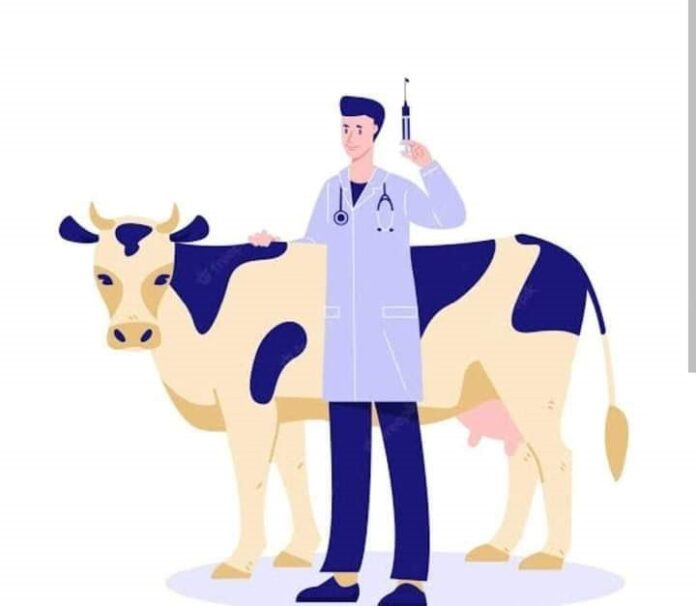Nutritional potential of seabuckthorn plant for livestock feeding
Seabuckthorn (Hippophae sp.) belonging to family Elaegnaceae grows extensively in cold desert areas of Hindu Kush Himalayas as a soil binding shrub which can withstand adverse climatic conditions (-43o to +40oC) of cold deserts. The term Hippophae is derived from two Latin words ‘Hippo’ meaning horse and ‘phae’ means to shine. In ancient Greece, seabuckthorn leaves and young branches were known to be mixed with fodder for horses to develop a shiny coat and improve their growth (Li and Schroeder, 1996). The genus Hippophae is distributed between 27o -69o N latitude and 7o W-122o E longitude in the world. It occurs as a native plant in China and is distributed throughout the major temperate zones of the world including France, Russia, Mongolia, India, Great Britain, Denmark, Netherlands, Germany, Poland, Finland and Norway (Rongsen, 1992). In India, it grows at high altitudes (2,000-4,300m) areas of Himachal Pradesh, Jammu and Kashmir, Uttarakhand, Sikkim and Arunachal Pradesh.
Distribution and Description
There are six species (Hippophae rhamnoides, H. salicifolia, H. tibetiana, H. gonicarpa, H. neurocarpa, and H. litangenis) and 12 subspecies of seabuckthorn are grown over the world. The shrubs reach 0.5-6 m tall, rarely up to 10 m in height, and typically occur in dry, sandy areas, on hills and hillsides, in valleys and river-beds. The dense and thorny bushes of seabuckthorn are salt tolerant and demand full sunlight for growth. The leaves are a distinct pale silvery-green, lanceolate, 3-8 cm long and less than 7 mm broad. It is dioecious with separate male and female plants. The male produces brownish flowers which produce wind-distributed pollen (Singh, 1998).
Maturity Indices and Harvesting
The fruit maturity in seabuckthorn is generally judged on the basis of their colour which may vary from pale yellow, yellow, deep orange and reddish orange with a total soluble solid content reaching up to 12.0o B or more and seed coat becoming very hard and brown in colour. The seabuckthorn plant bears foliage from April to November, flowers in June and July for a week and bears fruits from mid August to April that are harvested during September to November end although the plant remain laden with fruits till February and dry on the branch itself. The harvesting of seabuckthorn berries is the most important and difficult task because of the small size, stickiness of the soft fruits and thorny nature of the bushes (Singh and Singh, 2004). Two methods have been found effective in harvesting of seabuckthorn where the branches of seabuckthorn are beaten on the tree and fruits are collected on the ground while in another method the fruits are harvested after breaking off the branches from the mother plant followed by shedding of the berries to collect them on the ground. The yield of berries range between 2-3 kg/tree. A natural Seabuckthorn habitat can yield upto 750-1,500 kg/ha of berries, shelter belt planting upto 4 to 5 tonnes per hectare while orchard planting has been reported to yield upto 10 tonnes per hectare. A wild plant of seabuckthorn bears 1-2 kg fruits per year; while, exotic high yielding varieties are known to produce about 10-15 kg fruit per plant. However, the yield of berries is also known to vary with the type of species, cultivation and agro climatic conditions.
Physicochemical Characteristics
Seabuckthorn berries grown in dry temperate Himalayas are characterized as pea size which turns from greenish to reddish orange on maturity where one kg of ripe seabuckthorn fruit may contain 7,407-7,913 numbers of berries. The fruit/berry length varied from a maximum of 9.0 mm in orange coloured fruits and 7.6 mm in yellow coloured fruits and minimum of 6.2 mm in red coloured fruits, however, the width of all types of red, yellow and orange coloured fruits is uniformly 1.0 cm. Seabuckthorn seeds which were light to dark brown in colour with the exception of white seeds of H. tibetana were ovate to oblong in shape with size parameters ranging between 4.0 to 6.0 mm (length), 2.5 to 3.5 mm (breadth) and 1.6 to 2.2 mm (thickness). The berries have proven to be among the most nutritious fruits known as they are considered as a rich source of many bioactive substances such as vitamins (A, B1, B2, E, K and C), proteins, organic acids, flavonoids, carbohydrates and minerals, their composition further depends upon the species, geographical location and physiological maturity (Yao et al., 1992) The total soluble solids in seabuckthorn berry varied from 12.0 to 20.75o B while, the acidity in seabuckthorn berries is primarily due to malic acid and citric acid besides the presence of tartaric and succinic acid (Table 1). Seabuckthorn is the most nutritious and vitamin C rich fruit that varies between 360- 2,500 mg/100 g which is about 4-100 times higher than any other vegetable or fruit. Further the level of ascorbic acid in seabuckthorn berries grown in different areas have been found to be 650.0 mg/100 g in Nepal region; 3.50-85.7mg/ 100 g in Ukarine, 425.0 mg/100 g in Himachal Pradesh, and 422.0 to 516.0 mg/100 g in the berries grown in different agro climatic regions of India. Apart from vitamin C, fruits of seabuckthorn are among the rich source (10-30 mg/100 g) of many carotenoids (total 39 identified), particularly bcarotene which is one of the bioactive and a precursor of vitamin A. The carotenoid contents in seabuckthorn berries grown in different areas of the world have been reported as 6.8 mg per cent in India; 7.7-28.0 mg per cent in China; 3.28 mg per cent in Nepal and 0.14-3.10 mg per cent in Ukarine. In contrast to other fruits, lipids in seabuckthorn berries are distributed in all parts of the fruit, viz., skin, flesh and seeds as well, where 70 per cent of oil occurs in free form and rest in the bound form. The level of lipids in seabuckthorn berries range between 2.0 to 12.0 per cent, however, on dry weight basis the oil content has been found as 15.0 per cent in seeds and 34.0 per cent in soft parts of the berry. Similarly H. rhamnoides sub sp. rhamnoides contained a higher proportion of oil in seeds (11.3 per cent vs 7.3 per cent), berries (3.5 per cent vs 2.1 per cent) and pulp (2.8 per cent vs 1.7 per cent) than H. rhamnoides sub sp. sinensis. Further the seeds of orange coloured berries had the maximum oil content (11.7 per cent) followed by seeds of red (8.9 per cent) and yellow coloured fruits (8.2 per cent). Protein content in H. rhamnoides sub sp. sinensis was 0.4-1.6, 19.6- 30.0 per cent in the fruit pulp and seed, respectively.The seabuckthorn berries are a rich source of flavonoids containing 0.2 per cent in juice and 0.6 per cent in dry fruits, which cures high blood pressure, coronary heart problems and angina. The qualitative and quantitative study of flavonoidal compounds of H. rhamnoides and reported 109.7 to 778.5 mg per cent of flavonoids consisting of leucoanthocyanidin, catechins and flavonols. Thus, seabuckthorn berries are known to be good source of flavonoids, which can be used for curing many ailments.
Health Applications
Seabuckthorn has been shown to have a potent antioxidant activity, mainly attributed to its flavonoids and vitamin C content. There are five areas of research that have been focal points for their use: as an aid to patients undergoing cancer therapy; a long-term therapy for reduction of cardiovascular risk factors; treatment of gastrointestinal ulcers; internal and topical therapy for a variety of skin disorders (atopic dermatitis) and as a liver protective agent (for chemical toxins) and a remedy for liver cirrhosis (Yang et al., 2000). Other applications of seabuckthorn are treating burns and healing wounds, scalds, ulcerations, and infections, promoting regeneration of tissues, benefiting the hair (Li and Wang, 1994).

NUTRITIONAL POTENTIAL OF SEABUCKTHORN PLANT FOR LIVESTOCK FEEDING


